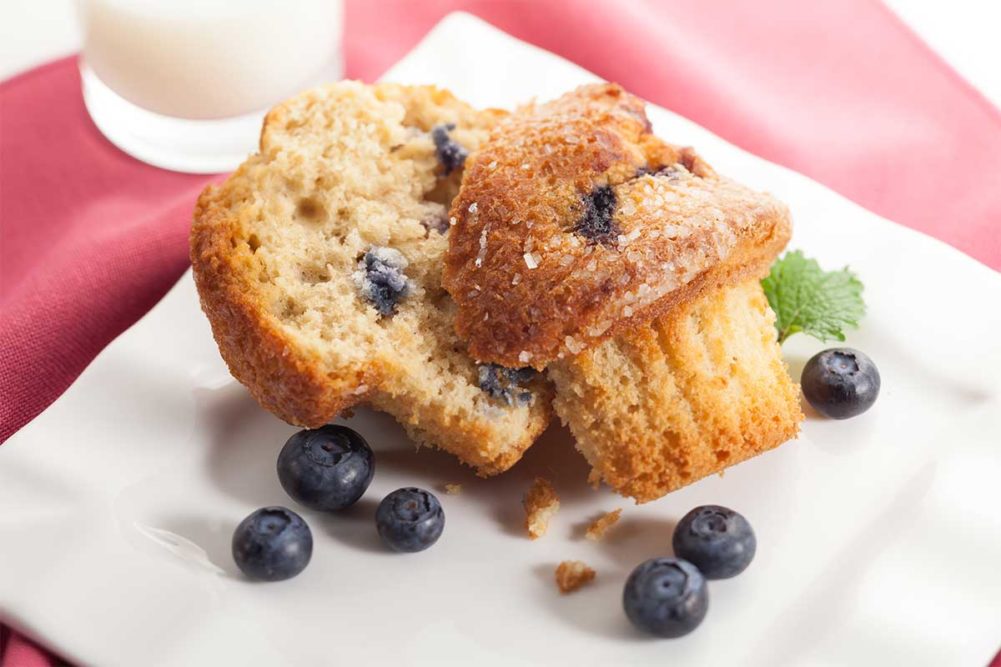When it comes to frozen dough, the greatest threat to the finished product quality is the management of moisture throughout the freeze-thaw cycles.
“Ice crystals can form during the freezing process, puncturing yeast cell walls and breaking gluten strands,” said Tim Christensen, certified master baker, Cargill. “A quick-freezing process using a blast freezer can help, but we also recommend using wheat flour with higher protein content. Similarly, bakers should add more yeast to the formula to compensate for the yeast that dies.”
With a damaged gluten matrix, a baked good will never reach its full volume in the proofer or the oven spring a baker would expect. But there are other issues such as those ice crystals damaging the starch.
“Broken starch granules may lead to starch agglomeration, retrogradation and subsequent staling,” said Kirsten Benneter, senior technologist, innovation, Ingredion Inc. “Moisture migration from within the baked good to the product’s surface can cause recrystallization, where the initially smaller ice crystals melt and combine to become larger ice crystals, leading to a visually icy surface as well as an icy texture and mouthfeel. Oil separation can also occur, leading to a dry and unpleasant texture upon consumption.”
The very function of emulsifiers — enabling the combination of two immiscible liquids such as oil and water — is what makes them so helpful in mitigating this moisture challenge.
“Emulsifiers help keep ice crystals small when the dough freezes, acting as an interface between water and fat and influencing how they interact with the starch in the dough,” Mr. Christensen said. “This helps gluten and yeast survive the freezing process, resulting in a higher quality finished product.”
The plethora of emulsifiers and the functions they each bring to a formulation also allow formulators to address the issues of different frozen dough applications.
“The addition of emulsifiers can improve dough strength so that it can better tolerate freezing-thawing cycles,” said Yanling Yin, PhD, director, research, development and applications, Corbion. “Emulsifiers can also assist with the minimization of water migration, which reduces ice burn and helps maintain fine cell structure. Additionally, emulsifiers help improve frozen dough product volume and softness of the end product.”
For example, while emulsifiers may be critical to maintaining the gluten matrix in yeast-raised products, they can also help with fat migration in laminated doughs.
“Frozen laminated doughs such as croissants require the addition of emulsifiers to maintain the integrity of the thin layers,” said Tyronna Capers, director of marketing, Bunge Loders Croklaan. “Emulsifiers help prevent damage from ice crystals as well as moisture and fat migration between the layers during storage for the best finished quality.”
There are certain applications, however, that may depend more on emulsifiers for preserving product quality, pointed out Matt Keyser, Northeastern sales, Brolite Products.
“Emulsifiers help in all applications, but in lean yeast-raised frozen dough they seem to be the most effective,” he said. “The reason being in lean doughs there tends to be higher amounts of water.”
Lean doughs not only tend to have more water, but they also contain less fat and sugar, which both assist in keeping ice crystals small, Mr. Christensen added.
Dr. Yin also recommended that emulsifiers will not only be critical for high-moisture doughs but also baked goods made with high levels of non-wheat flour.
This article is an excerpt from the September 2021 issue of Baking & Snack. To read the entire feature on Emulsifiers, click here.






